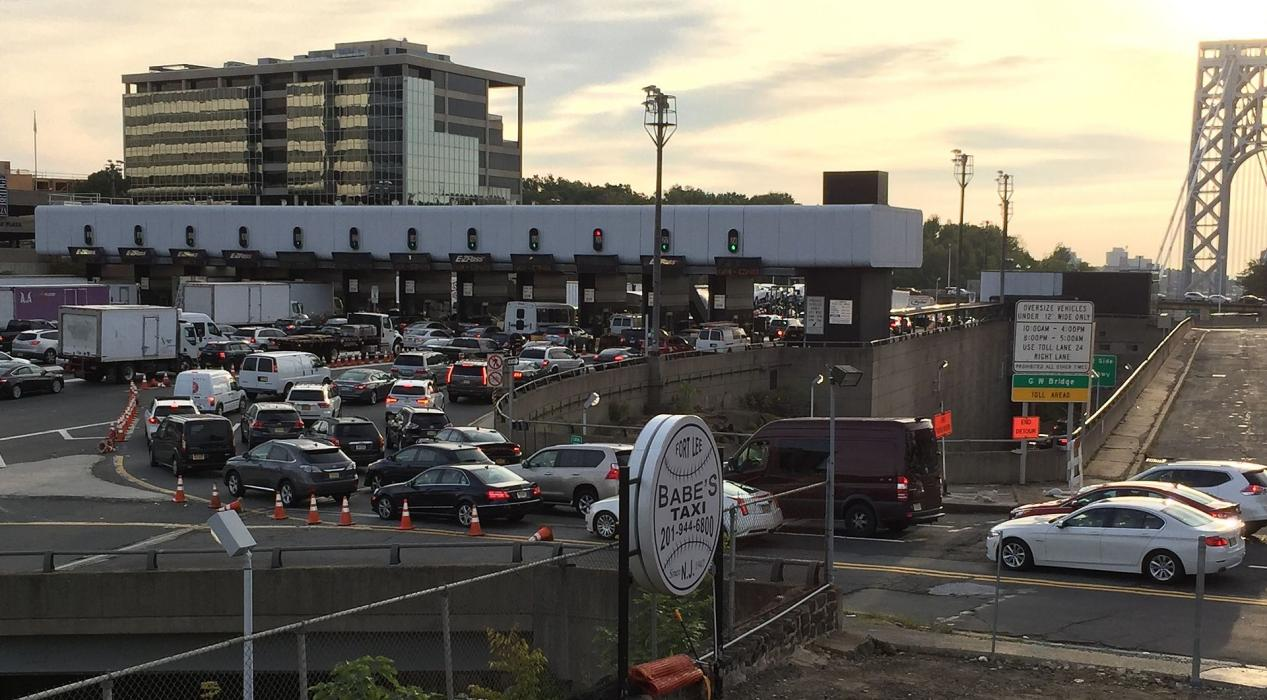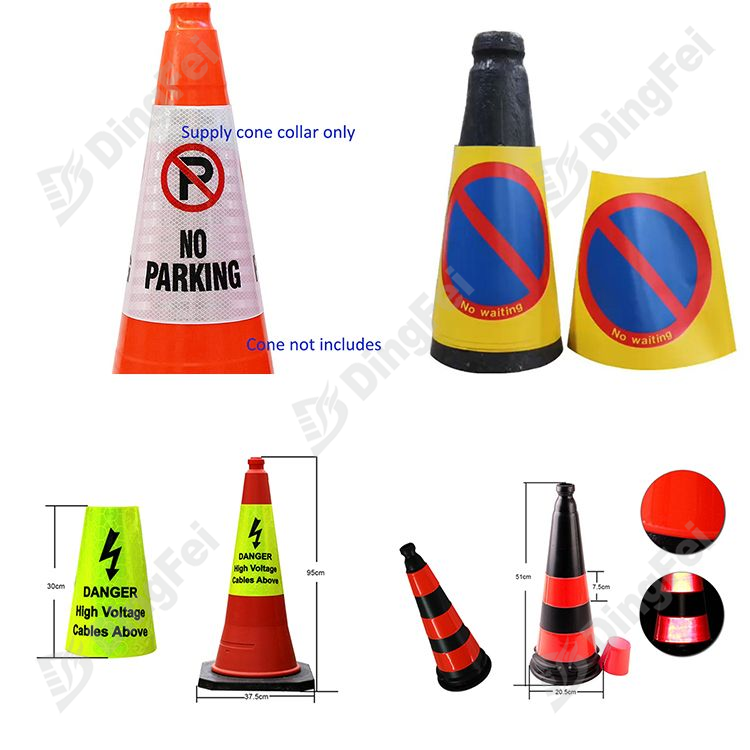
Traffic management
Cones in use at the "Bridgegate" entrance to the George Washington Bridge in Fort Lee, New Jersey
Traffic cones are typically used outdoors during road work or other situations requiring traffic redirection or advance warning of hazards or dangers, or the prevention of traffic. Traffic cones are also used to mark where children are playing or to block off an area. For night time use or low-light situations traffic cones are usually fitted with a retroreflective sleeve to increase visibility. On occasion, traffic cones may also be fitted with flashing lights for the same reason.
In the US, cones are required by the US Federal Highway Administration's Manual on Uniform Traffic Control Devices (MUTCD) to be fitted with reflective white bands to increase night-time visibility. Reflective collars, white strips made from white reflective plastic, slip over cones snugly, and tape or adhesive can be used to permanently attach the collars to the cones.
Traffic cones are designed to be highly visible and easily movable. Various sizes are used, commonly ranging from around 30 cm (11.8 in) to a little over 1 m (39.4 in). Traffic cones come in many different colors, with orange, yellow, pink and red being the most common colors due to their brightness. Others come in green and blue, and may also have a retroreflective strip (commonly known as "flash tape") to increase their visibility.

Traffic cone on the right is used to indicate that no parking is allowed (UK)
Typical traffic cones are fluorescent "safety" orange or lime green, but in some countries a range of other colors are used depending on context. Traffic cones also commonly come with reflective striping around them, to increase visibility.
In the United States, they come in such sizes as:
12 in (305 mm), 1.5 lb (0.68 kg) – for indoor/outdoor applications
18 in (457 mm), 3 lb (1.4 kg) – for outdoor applications such as free-way line painting
28 in (711 mm), 7 lb (3.2 kg), (also called Metro cones for their use in cities) – for Non-highway applications e.g. Local street,
28 in (711 mm), 10 lb (4.5 kg) – for free-way/high-way applications (With reflective stripes)
36 in (914 mm), 10 lb (4.5 kg) – for free-way/high-way applications (With reflective stripes)
In New Zealand, they are compliant in two sizes for use on all roads; these are:
35 in (900mm), up to 16.5 lb (7 kg) - for all activities on all roads. (with two reflective stripes)
17.7 in (450mm), up to 16.5 lb (7 kg) - for the protection of wet road markings only. (with one reflective stripe)
Other forms[edit]
Cones are easy to move or remove. Where sturdier (and larger) markers are needed, construction sites use traffic barrels (plastic orange barrels with reflective stripes, normally about the same size as a 55 US gallons (46 imp gal; 208 L) drum). When a lane closure must also be a physical barrier against cars accidentally crossing it, a Jersey barrier is preferred. See also Fitch Barrier.
In many countries such as Australia or American states such as California, traffic barrels are rarely seen. Devices called bollards are used instead of cones where larger and sturdier warning or delineation devices are needed. Typically, bollards are 1,150 mm (45 in) high fluorescent orange posts with reflective sleeve and heavyweight rubber bases. Larger devices such as barrier boards may be used instead of cones where larger areas need to be excluded or for longer periods.
Indoor and non-traffic use
Cones are used to lay out courses for autocross competitions.
Cones are also frequently used in indoor public spaces to mark off areas which are closed to pedestrians, such as a restroom being out of order, or to denote a dangerous condition, such as a slippery floor. They can be used on school playgrounds to limit areas of a playing field, and on ice rinks to define class, private party, or private lesson areas. Some of the cones used for this purpose are miniature, as small as 5 cm (2.0 in) tall, and some are disposable full-size cones made of biodegradable paper.
Being distinctive, easily portable and usually left unguarded, traffic cones are often stolen. Students are frequently blamed, to the extent that the British National Union of Students has attempted to play down this "outdated stereotype".

Dingfei support customized design for various cone sleeves, also can recommend good supplier of traffic cone to help our customers.
